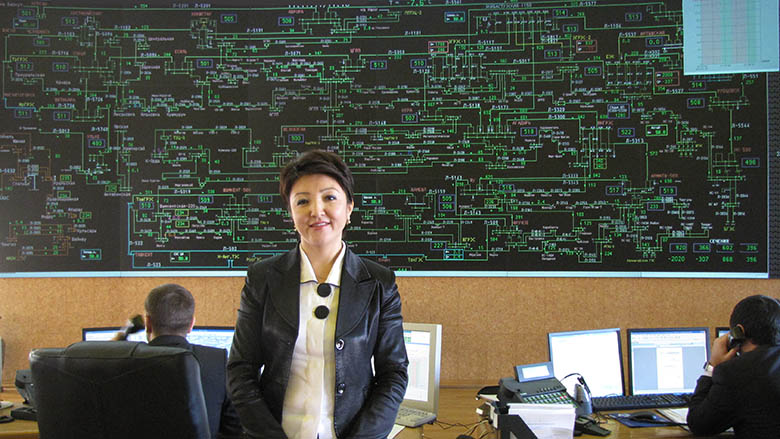The railroad industry is one of the most gender unequal industries in the world. In Europe and Central Asia, gender gaps exist in both employment and access to transportation. On average, 77% of all those employed in transportation in the region are men, compared to just 23% for women.
The travel experiences of women and men can differ widely in terms of accessibility, affordability, availability and safety. For example, one of the biggest challenges women face, in transit and in public, are perceived and actual threats of violence. And women often have to pay more for travel, as their daily trips can involve food shopping, taking care of children, running errands, and more.
In Bosnia and Herzegovina and Serbia, a World Bank grant-supported project aims to address some of these challenges. The goal is to open the rail system to women workers by helping them get better access to jobs, boosting the number of women working for railroads and, for all passengers, ensuring railroads are useable, as inexpensive as possible, and safe.
Given that the European Green Deal aims to move Europe from a high- to low-carbon economy, and that 2021 is the European Year of Rail, making railways safer, cheaper, and more attractive is increasingly important in the region.
Currently transport services remain heavily male-dominated, so women’s voices as transport users are not always heard, and there is often little incentive for transport services to respond to the particular needs of women users. Employing more women in the transport sector and bringing women’s perspectives to the fore can lead to a more inclusive transport service.
Improving Logistics and Job Opportunities
With a focus on greener transport, and more efficient use of railroads, the World Bank is working with the Turkish government to help improve freight train logistics and lowering of costs on some designated rail lines. Turkey, an upper middle income country, is a big land mass with a robust trade portfolio, but it moves only 4% of its goods by rail, which is very low by international standards.
The World Bank logistics improvement project also aims to put Turkish women in transport jobs. In 2019, Turkey’s rate of female labor force participation, 39%, was the lowest in the OECD, and transportation and logistics are disproportionately male-dominated.
A 2019 survey shows women make up only 11% of those in transport, storage and communication. The project will offer three-month internships in traditionally male-dominated fields, like engineering, to 20 female last-year university students and graduates, in addition to hosting “career days” and making short introductory videos to promote careers in transport and logistics.
Putting Women in the Driver’s Seat
In Azerbaijan, women are barred from working in precisely 674 different occupations spread across many parts of the economy – from transport to energy. For example, women are forbidden to lay asphalt, drive a train or drive a city bus with more than 14 seats.
The labor law dates from when Azerbaijan was part of the Soviet Union and is, ostensibly, meant to keep women out of jobs that could be harmful to their, or their baby’s health. But it also keeps women out of the labor force, making them legally prohibited from some potentially high-paying careers.
The World Bank is supporting Azerbaijan’s Ministry of Labor and Social Protection of the Population as it reviews such barriers to women, which come at a cost to society: women in Azerbaijan earn about 50% less than men, the highest reported pay gap in the Europe and Central Asia region.
Azerbaijan’s law is not unique – according to Women, Business and the Law 2021, sixteen countries restrict women from working in transportation, while twenty-six countries prevent them from working the same night hours as men. Seventy-four countries restrict women’s employment in certain industries and fifty-six prohibit women from working in jobs deemed dangerous.
Keeping women out of the workforce has an impact on entire economies, leaving countries with smaller talent pools and fewer workers to fuel economic growth.
The International Labour Organization has highlighted lack of transportation as the greatest challenge to women’s labor force participation in developing countries, reducing the probability of women participating in the labor force by an estimated 16.5%.
Fully openning rail and transport to women and men – both as a way to travel and to get a job – is also a key step in unlocking the potential of railroads to provide environmentally sustainable transport and green growth.
--------------------------
The aforementioned projects in Bosnia and Herzegovina and Serbia, as well as part of the work in Azerbaijan, are supported by the Railways Window of the Mobility and Logistics Trust Fund.

